The 1980 Olympic hockey tournament in Lake Placid, New York, produced the most stunning upset in sports history—a moment so improbable that it became known simply as the “Miracle on Ice.” A team of American college players, average age 21, defeated the seemingly invincible Soviet Union team that had dominated international hockey for decades, then captured Olympic gold against Finland two days later. This victory transcended sports, occurring during a period of national uncertainty and Cold War tensions, providing Americans with a unifying moment of pride and possibility that resonates more than four decades later.
Whether you’re a hockey enthusiast, sports historian, or an organization seeking to celebrate athletic excellence and inspiring achievement, understanding the Miracle on Ice provides timeless lessons about preparation, perseverance, and the power of belief when confronting overwhelming challenges.

The Context: American Hockey and Cold War Tensions in 1980
Understanding the Miracle on Ice requires appreciating the broader context of American hockey development and international relations in 1980.
American Hockey’s Olympic History
Through the 1970s, American Olympic hockey teams struggled to compete internationally, facing fundamental disadvantages that made medal hopes unrealistic.
Historical Challenges:
Amateur Status Restrictions:
- Olympic rules required amateur participants, while Soviet and Eastern European players were state-supported “amateurs” training full-time
- American amateurs competed against teams functioning as professional players in all but name
- This competitive gap made victories against Soviet and European powerhouses nearly impossible
- Previous American Olympic teams had been dominated by these professional national teams
Limited Development Infrastructure:
- American hockey remained regionally concentrated in northern states and a few major cities
- Youth hockey programs lacked the systematic development present in hockey-first nations
- College hockey served as the primary American development pathway, but players balanced academics with athletics
- American players typically peaked later than international competitors who focused exclusively on hockey from young ages
Previous Olympic Results:
- The 1960 gold medal at Squaw Valley represented the sole American Olympic hockey championship
- That victory, while celebrated, was viewed as an isolated achievement rather than indicating sustained competitive progress
- Through the 1970s, American teams finished fourth or worse at most Olympics and World Championships
- The Soviet Union dominated international hockey, winning virtually every significant tournament from the 1960s forward
The 1980 team faced expectations matching this history—respectable performance but no realistic championship hopes.
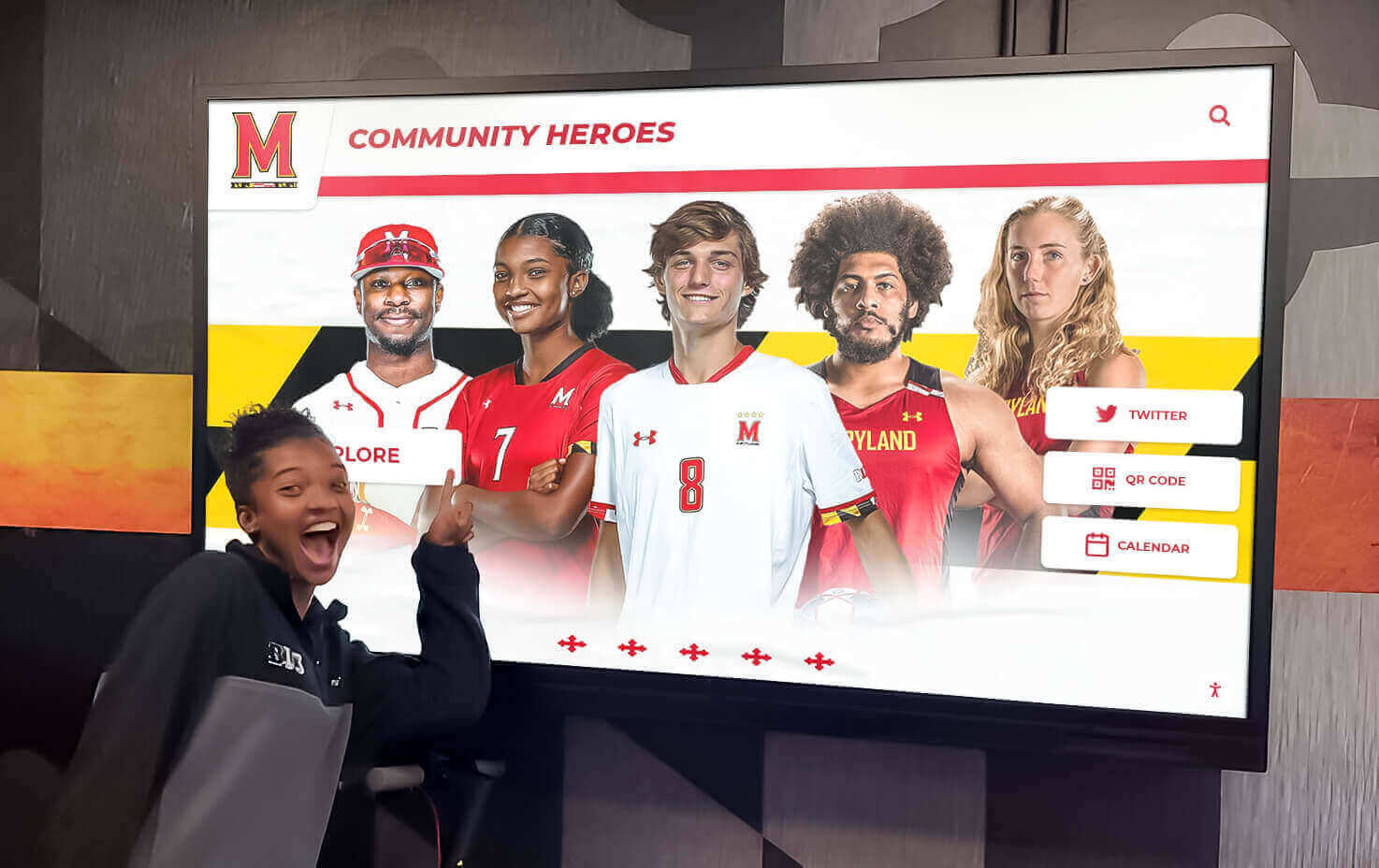
The Soviet Hockey Machine
The Soviet team arriving in Lake Placid represented perhaps the greatest hockey dynasty in history, having dominated international competition for nearly two decades.
Soviet Dominance Factors:
Systematic Development:
- Soviet hockey players were identified and developed through comprehensive state-sponsored programs from childhood
- The best players entered specialized sports schools focusing exclusively on hockey development
- Training methods emphasized skating skill, passing precision, and tactical sophistication
- Players received world-class coaching, medical support, and resources throughout development
Professional in All but Name:
- Soviet players held military ranks or nominal jobs but trained and competed full-time
- The national team stayed together year-round, developing chemistry impossible for teams assembling periodically
- Playing style emphasized speed, puck control, and precise passing that overwhelmed opponents
- Physical conditioning reached levels American amateur teams couldn’t match
Tournament Record:
- The Soviet Union had won every Olympic gold medal since 1964, a streak of four consecutive championships
- At the 1980 Olympics, they entered as prohibitive favorites having destroyed opponents throughout the 1970s
- Just days before the Olympics began, the Soviets defeated an NHL all-star team 6-0 at Madison Square Garden, demonstrating superiority even over professional North American players
- Individual Soviet players like Vladislav Tretiak, Boris Mikhailov, and Valeri Kharlamov were internationally recognized as the sport’s finest players
When American and Soviet teams were announced for Lake Placid, virtually no hockey expert gave the United States any realistic chance of competitive games, much less victory.
Cold War Atmosphere
The Miracle on Ice unfolded against intense Cold War tensions that added political significance to athletic competition.
International Context in 1980:
Soviet-American Relations:
- The Soviet invasion of Afghanistan in December 1979 had severely damaged U.S.-Soviet relations
- President Jimmy Carter had imposed economic sanctions and was preparing to announce an American boycott of the 1980 Summer Olympics in Moscow
- Tensions between superpowers reached levels unseen since the Cuban Missile Crisis
- Military confrontation seemed possible as rhetoric intensified on both sides
American National Mood:
- The Iranian hostage crisis dominated American consciousness, with Americans held captive for months
- Energy crises and economic stagnation created domestic uncertainty and pessimism
- American international prestige seemed diminished following Vietnam and various foreign policy setbacks
- A sense of national malaise pervaded public discourse, with questions about American power and purpose
Symbolic Significance:
- Athletic competition became a proxy battlefield for Cold War ideological struggle
- Soviet victories in Olympic competition were portrayed as demonstrating communist system superiority
- American defeats to Soviet teams reinforced narratives of declining American competitiveness
- Any potential American victory would carry significance far beyond sports
Into this environment came an Olympic hockey tournament that would provide unexpected drama capturing worldwide attention.

Herb Brooks: The Visionary Coach
No individual mattered more to the Miracle on Ice than coach Herb Brooks, whose vision, preparation, and leadership transformed a collection of talented college players into Olympic champions.
Brooks’s Background and Hockey Philosophy
Herb Brooks brought unique qualifications and perspectives to the coaching position that proved essential to the team’s success.
Coaching Experience:
- Brooks had established himself as one of college hockey’s most successful coaches at the University of Minnesota
- His Minnesota teams won three NCAA championships employing innovative tactics and demanding preparation
- Brooks understood both North American and European playing styles through extensive international observation
- He had studied Soviet hockey methods intensively, believing American teams could adopt elements while maintaining physical advantages
Playing Career Context:
- Brooks had been the final player cut from the 1960 gold medal-winning U.S. Olympic team, a bitter disappointment that motivated his coaching career
- He understood the fine line between Olympic success and failure from personal experience
- His playing style had emphasized intelligence and positioning over pure physical gifts
- Brooks believed preparation and system could overcome individual talent disparities
Philosophical Approach:
- Brooks intended to implement a hybrid style combining European skating and passing with North American physicality
- He emphasized conditioning that would allow his team to maintain speed and pressure for entire games
- Mental toughness mattered as much as physical ability in Brooks’s evaluation of players
- Team chemistry and commitment to collective success outweighed individual statistics or recognition
Brooks’s selection as Olympic coach proved controversial among hockey traditionalists who questioned his methods, but USA Hockey leadership trusted his vision.
Team Selection and Training Camp
Brooks approached team selection differently than previous Olympic coaches, prioritizing specific characteristics over pure talent.
Selection Philosophy:
Key Evaluation Criteria:
- Skating speed and endurance to execute Brooks’s fast-paced system
- Youth and coachability over experience and established reputations
- Willingness to sacrifice individual recognition for team success
- Character and mental toughness capable of handling pressure
- Chemistry with teammates rather than just individual skills
Roster Composition:
- Brooks selected primarily from Minnesota and Massachusetts college programs where he could evaluate players extensively
- Average age of approximately 21 years, making them significantly younger than international opponents
- Many players came from rivalry schools (Minnesota vs. Minnesota-Duluth, Boston University vs. Boston College) that Brooks had to unite
- No NHL experience among the roster, as professional status disqualified Olympic participation
- Thirteen forwards, seven defensemen, and two goaltenders comprising the 20-player Olympic roster
Notable Players:
- Mike Eruzione (Boston University) served as team captain and inspirational leader
- Jim Craig (Boston University) provided goaltending that would prove crucial
- Mark Johnson (University of Wisconsin) offered game-breaking offensive talent
- Ken Morrow (Bowling Green) anchored the defense with steady positioning
- Buzz Schneider provided veteran experience as one of the roster’s older players
Brooks’s selections surprised hockey observers who expected different rosters based on traditional evaluation methods, but he pursued specific attributes matching his system.

Brutal Preparation Methods
Once selected, players endured training that tested physical limits and mental resolve, preparation that proved essential to eventual success.
Training Camp Intensity:
Physical Conditioning Focus:
- Brooks implemented conditioning programs exceeding anything players had experienced in college
- The infamous “Herbies”—full-ice sprints performed repeatedly until exhaustion—became legendary among the team
- Skating drills emphasized speed and endurance essential to Brooks’s system
- Players who couldn’t maintain pace faced immediate roster dismissal
- Training intensity created team unity through shared suffering and accomplishment
Psychological Pressure:
- Brooks deliberately created adversarial relationships with players, positioning himself as the common enemy
- Harsh criticism and demanding expectations tested mental toughness
- Players who responded defensively or complained were deemed mentally unprepared
- The pressure separated those who thrived under adversity from those who wilted
- Brooks believed Olympic pressure would feel manageable after surviving his training
System Implementation:
- Brooks taught his hybrid North American-European style through countless repetitions
- Forechecking patterns that pressured opponents into turnovers required precise execution
- Quick transitions from defense to offense demanded split-second decision-making
- Players learned to anticipate teammates’ positioning through system-based play
- Tactics emphasized exploiting Soviet weaknesses Brooks had identified through study
Exhibition Schedule:
- The team played 61 games between team selection and Olympic competition
- Exhibition opponents included college teams, minor league clubs, and international squads
- Brooks scheduled games in small towns across America, building fan support
- The team played the Soviet national team at Madison Square Garden just days before the Olympics
- The 10-3 defeat to the Soviets reinforced underdog status while providing tactical insights
By the time the Olympics began, players were exhausted physically but united psychologically, prepared mentally for the challenge ahead, and convinced that Brooks’s system could work against superior opponents if executed properly.
Training experiences are documented in hockey program recognition displays celebrating development pathways from amateur to Olympic levels.

The Olympic Tournament: Round Robin Play
The 1980 Olympic hockey tournament employed a format dividing teams into two groups, with top teams from each group advancing to a medal round.
Tournament Format and Structure
Understanding the tournament format clarifies the path to potential medals and the challenge facing Team USA.
Competition Structure:
- Twelve teams divided into two groups (Red and Blue)
- Each team played group opponents in round-robin format
- Top two teams from each group advanced to medal round
- Medal round determined final standings and medal winners
- Results from preliminary games carried forward to medal round standings
The United States competed in the Blue Division alongside Sweden, Czechoslovakia, Norway, Romania, and West Germany. The Soviet Union led the Red Division with Finland, Canada, Poland, Netherlands, and Japan.
Opening Game: USA vs. Sweden (2-2 Tie)
The Americans’ Olympic campaign began with a game demonstrating both their potential and vulnerability.
Game Flow:
Swedish Control:
- Sweden, a strong European team, jumped to a 1-0 first period lead
- The Swedes expanded the advantage to 2-1 early in the third period
- Swedish experience and disciplined play suggested they would close out victory
- Team USA appeared headed for a discouraging opening loss that would damage medal hopes
Dramatic American Rally:
- With the game seemingly decided, Bill Baker scored with 27 seconds remaining in regulation to tie 2-2
- The dramatic goal salvaged a point and kept American medal hopes alive
- Players celebrated as if they had won, recognizing they had escaped defeat
- The tie demonstrated American resilience that would prove crucial
Game Significance:
- A loss in the opening game would have made advancing from the group extremely difficult
- The tie provided confidence that Americans could compete with European teams
- Team chemistry strengthened through shared adversity and dramatic finish
- Brooks’s conditioning paid immediate dividends—Americans maintained speed when opponents tired
The relieved Americans left the ice understanding they had received a gift they couldn’t afford to waste.
Defeating the Minnows: Building Confidence
Following the Swedish tie, the Americans needed to defeat weaker opponents convincingly to strengthen their position.
Czechoslovakia (7-3 Victory):
- The Czechs represented one of hockey’s traditionally strong programs
- Team USA’s convincing victory demonstrated improving confidence and system execution
- Multiple goal scorers showed balanced offensive depth
- The Americans’ speed and forechecking pressure overwhelmed Czech defenders
- The victory positioned the U.S. well for medal round qualification
Subsequent Victories:
- Norway, Romania, and West Germany all fell to Team USA by comfortable margins
- Winning these “expected” games proved the team could handle pressure against inferior opponents
- Goal differential mattered for standings, making convincing victories important
- Each game refined Brooks’s system and built team confidence
Advancing to the Medal Round
Completing preliminary play with a 4-0-1 record, the United States advanced to the medal round as the Blue Division’s second-place team.
Positioning:
- The Americans would face the Red Division’s top two teams—the Soviet Union and Finland
- Sweden also advanced from the Blue Division, along with the Soviets and Finland
- Medal standings would be determined by results in the medal round combined with preliminary results carried forward
- The path to gold required victories over both the Soviets and Finns—an outcome no expert considered realistic
Team USA entered the medal round having exceeded expectations simply by advancing, but their greatest challenges awaited.
Organizations celebrating hockey achievements use digital trophy recognition systems to preserve tournament success and championship memories.

The Miracle Game: USA vs. Soviet Union
February 22, 1980—the date became synonymous with Olympic triumph and the power of belief over seemingly impossible odds.
Pre-Game Atmosphere and Expectations
The United States and Soviet Union met in the medal round with dramatically different expectations and pressures.
Soviet Confidence:
- The Soviets had dominated preliminary opponents by outscoring them 51-11 across five games
- Their previous exhibition demolition of NHL all-stars had reinforced their invincibility
- Soviet players and coaches expected routine victory, viewing the Americans as respectable but overmatched
- International betting odds heavily favored the Soviets, with some bookmakers refusing American victory bets
- Soviet head coach Viktor Tikhonov focused on the gold medal game against Finland or Sweden following expected victory
American Reality:
- Few hockey experts gave Team USA any realistic chance beyond staying competitive
- The Madison Square Garden exhibition defeat by 10-3 just weeks earlier had exposed the talent gap
- Brooks avoided inflating expectations, focusing players on system execution rather than outcome
- Players understood they were massive underdogs facing hockey’s greatest team
- The game was scheduled for 5:00 PM EST to accommodate American television, ensuring maximum national audience
The atmosphere in the Lake Placid Olympic Center reached fever pitch as fans packed the arena for what most expected would be a memorable but ultimately futile American effort.
First Period: Defying Expectations
The opening period unfolded in ways that stunned observers as the Americans not only competed but threatened.
Soviet Opening Strike:
- Vladimir Krutov scored at 9:12 of the first period, giving the Soviets the expected early lead
- The goal appeared to portend the dominant Soviet victory everyone anticipated
- American players and coaches recognized they needed immediate response to avoid psychological collapse
Buzz Schneider’s Answer:
- Less than a minute after the Soviet goal, at 14:03, Buzz Schneider scored to tie the game 1-1
- The quick response demonstrated American resolve and prevented Soviet momentum
- The sold-out crowd erupted, sensing possibilities exceeding pre-game expectations
- Brooks’s conditioning system allowed Americans to maintain pace with the skilled Soviets
Mark Johnson’s Buzzer-Beater:
- With seconds remaining in the period and the game tied 2-1 after a Soviet goal, Mark Johnson collected a rebound from a shot that deflected off goalie Vladislav Tretiak
- Johnson scored with exactly one second remaining, tying the game 2-2
- The timing devastated Soviet confidence while electrifying the Americans
- Soviet coach Tikhonov made the controversial decision to replace Tretiak with backup Vladimir Myshkin for the second period
- The Americans left the ice in a 2-2 tie when they should have been trailing significantly
The first period established that this game would not follow the expected script.
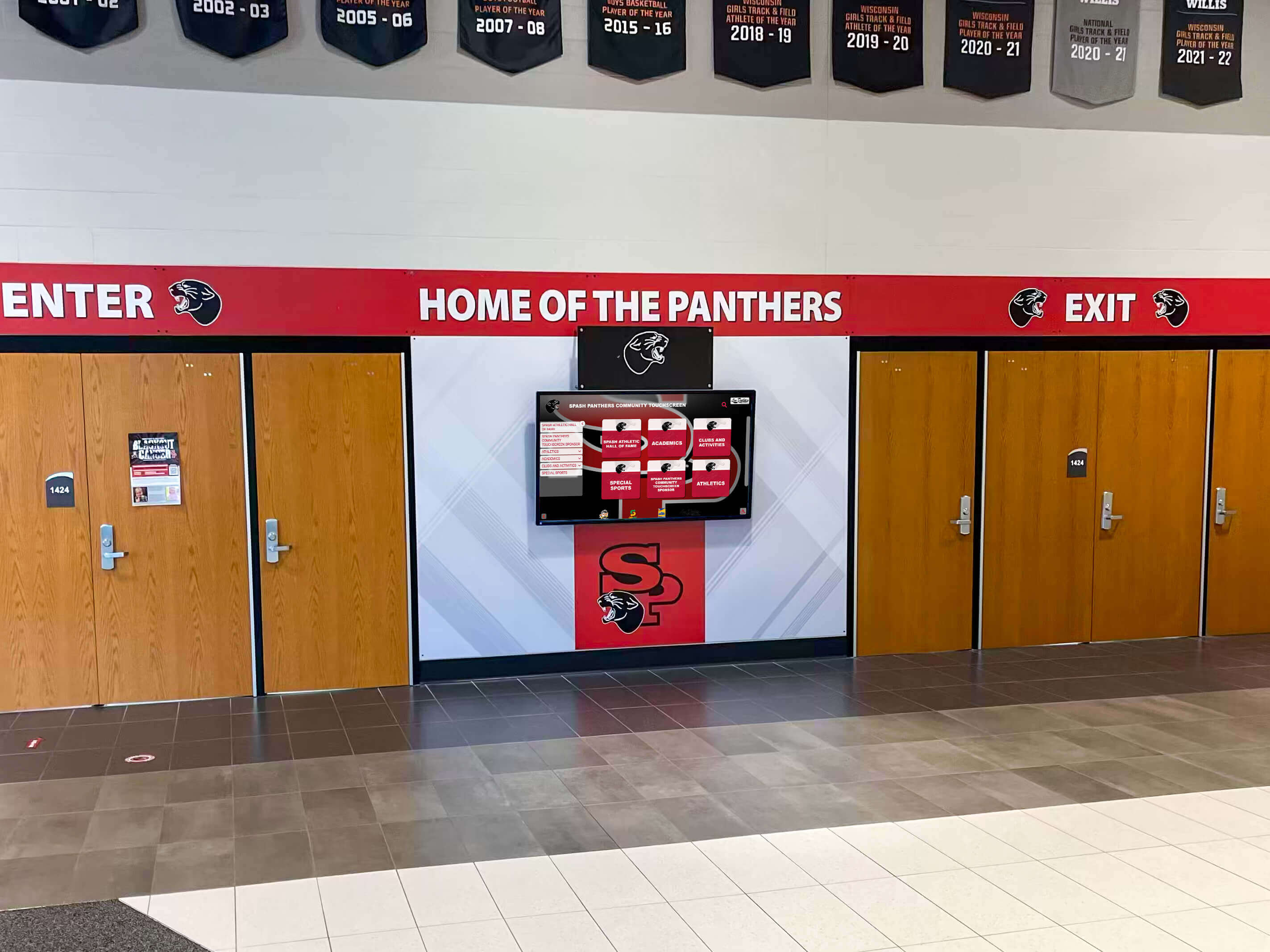
Second Period: Maintaining Hope
The middle frame saw the Soviets reassert control, yet the Americans maintained striking distance.
Soviet Dominance:
- Aleksandr Maltsev scored at 2:18 to restore the Soviet lead at 3-2
- The Soviets controlled possession and generated far more scoring chances than the Americans
- Soviet passing combinations created numerous dangerous opportunities that goalie Jim Craig somehow denied
- The Americans appeared in danger of being overwhelmed as Soviet pressure intensified
- Only Craig’s spectacular goaltending prevented the game from becoming a rout
American Resilience:
- Despite being dominated territorially, the Americans maintained their system
- Forechecking pressure forced Soviet turnovers at crucial moments
- Brooks shortened his bench, relying on his strongest players to maintain the pace
- The team blocked shots desperately, sacrificing bodies to keep the deficit at one goal
- Players who had trained for months under brutal conditions found additional reserves when exhaustion threatened
The period ended with the Soviets leading 3-2, but the score felt like a victory for Team USA given Soviet possession advantages. One period remained for Americans to complete the improbable upset.
Third Period: The Miracle Unfolds
The final twenty minutes produced moments that became permanently etched in sports history and American cultural memory.
Mark Johnson Ties Again:
- At 8:39 of the third period, Mark Johnson scored his second goal, tying the game 3-3
- The goal came moments after a Soviet power play expired, catching Soviet defenders in transition
- The sold-out crowd reached deafening levels, willing the Americans forward
- Soviet players showed frustration as the persistent Americans refused to fold
- Equal score with eleven minutes remaining meant the unthinkable was becoming possible
Mike Eruzione’s Legendary Goal:
- At 10:00 of the third period, captain Mike Eruzione received a pass from Mark Pavelich
- From 30 feet out, Eruzione fired a wrist shot that beat goalie Vladimir Myshkin
- The Americans led 4-3—their first lead since early in the first period
- Eruzione’s teammates mobbed him in celebration while the crowd erupted in pandemonium
- Brooks shouted from the bench that ten minutes remained—the game was not over
Jim Craig’s Final Stand:
- For the final ten minutes, the Soviets threw everything at the American goal
- Jim Craig made save after desperate save as the Soviets pressed for an equalizer
- American defensemen blocked shots and cleared rebounds while exhaustion threatened
- Time seemed frozen as the Americans defended against wave after wave of Soviet attacks
- Players sacrificed their bodies blocking shots, diving to clear loose pucks, and collapsing lanes
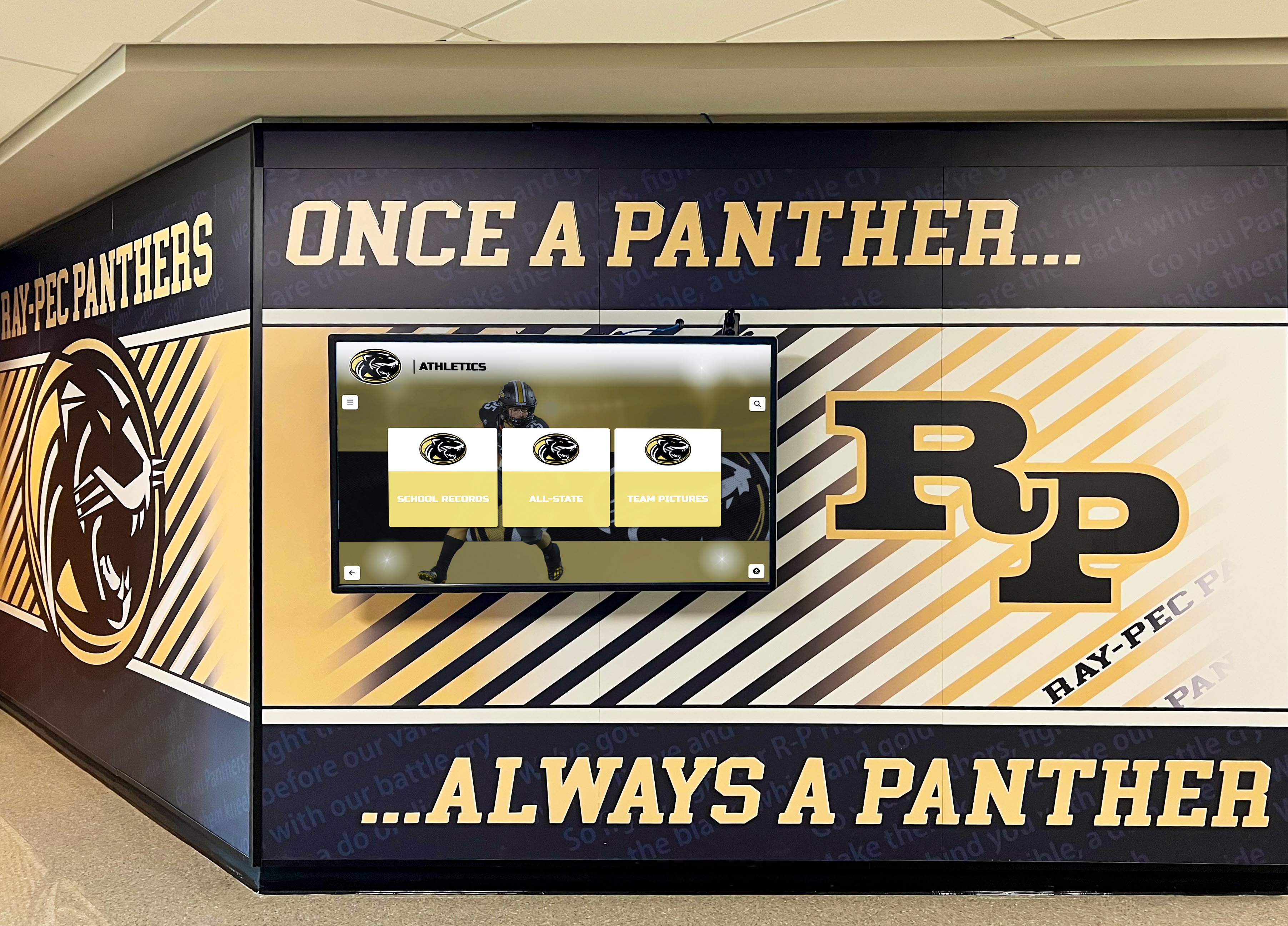
The Final Seconds:
- As the clock ticked under ten seconds, ABC announcer Al Michaels prepared his legendary call
- American players on the bench counted down the final seconds
- Michaels asked, “Do you believe in miracles?” as time expired
- “YES!” he shouted as pandemonium engulfed the arena
- Americans celebrated on the ice while players on the bench swarmed onto the ice
- The Soviet Union had been defeated 4-3 in the greatest upset in sports history
The victory created immediate national celebration, with Americans across the country rejoicing at the improbable triumph over the Cold War rival.
Programs celebrating championship moments implement showcase championship displays documenting complete tournament narratives and legendary performances.
Statistical Reality and Jim Craig’s Heroics
The box score revealed just how improbable the American victory was given the game flow.
Shot Statistics:
- The Soviet Union outshot the United States 39-16, more than doubling American attempts
- Soviet possession advantages were even more dramatic than shot totals indicated
- Jim Craig faced nearly constant pressure for significant portions of the game
- Multiple Soviet shots hit posts or crossbar, narrowly missing goal
Craig’s Performance:
- Craig’s 36 saves represented one of Olympic history’s greatest goaltending performances
- He denied repeated Soviet power play opportunities and breakaways
- Craig’s positioning and reflexes defied the shot quality the Soviets generated
- Without Craig’s heroics, the American victory would have been impossible
- His performance validated Brooks’s decision to rely on him as the starting goaltender
The victory resulted from many factors—Brooks’s preparation, team conditioning, system execution, timely scoring, and resilient defense—but Craig’s goaltending provided the foundation enabling everything else.

The Gold Medal Game: USA vs. Finland
The euphoria following the Soviet victory created a dangerous situation—the Americans still needed to defeat Finland to guarantee the gold medal.
The Challenge of Coming Back Down
Team USA faced the difficult task of refocusing after the emotional high of defeating the Soviets.
Psychological Hurdle:
- Many players and fans mistakenly believed the Soviet victory had secured gold
- The emotional expenditure against the Soviets left little in reserve
- Finland, while not Soviet-caliber, remained a dangerous opponent with medal aspirations
- The two-day gap between games allowed Americans to realize gold remained uncertain
- Brooks emphasized that losing to Finland would make the Soviet victory meaningless
Finland’s Motivation:
- The Finns understood defeating the Americans would likely deliver them gold or silver
- Finland had competitive players who would not be intimidated by American momentum
- Finnish goaltending and disciplined defense could frustrate American offense
- A single Finnish goal could create doubt and pressure on exhausted Americans
Brooks delivered one of his most famous speeches, telling players “If you lose this game, you’ll take it to your f—ing grave.” His brutal honesty shocked players back to focus.
Falling Behind: A Test of Character
The gold medal game began disastrously for the Americans, testing whether their Soviet victory represented sustainable excellence or momentary lightning in a bottle.
Finnish Opening:
- Finland stunned the Americans by scoring 2:25 into the first period
- Jukka Porvari’s goal silenced the Lake Placid crowd and validated concerns about American complacency
- The Finns expanded their lead to 2-1 early in the second period
- American players appeared tight and fatigued, unable to generate the energy that characterized the Soviet game
- The nightmare scenario—losing gold after defeating the Soviets—appeared increasingly possible
American Resilience:
- Phil Verchota tied the game 2-2 midway through the second period, providing crucial relief
- The goal demonstrated character as Americans refused to panic despite adversity
- Brooks’s preparation and team unity proved itself once again
- Players who had survived brutal training found additional reserves when facing elimination
The second intermission arrived with the game tied 2-2, setting up a dramatic final period that would determine Olympic gold.
Final Period: Securing Gold
The third period saw the Americans finally break through against Finnish resistance to claim Olympic glory.
Mark Johnson’s Heroics Continue:
- At 6:05 of the third period, Mark Johnson scored to give the Americans a 3-2 lead
- Johnson’s tournament performance had been exceptional, with crucial goals in the biggest games
- The goal provided breathing room and momentum
Rob McClanahan’s Insurance:
- At 16:25, Rob McClanahan scored to expand the lead to 4-2
- The two-goal cushion allowed Americans to play more conservatively
- Finnish desperation created counterattack opportunities
Final Minutes:
- Brooks kept his players focused as the final minutes ticked away
- Unlike the Soviet game’s frantic finish, the Americans controlled the final minutes
- Jim Craig again secured the victory with solid goaltending when challenged
- As time expired, Americans celebrated with the realization they were Olympic champions
- Players piled onto the ice in celebration as gold medals were secured
The 4-2 victory over Finland completed the improbable journey from anonymous college players to Olympic champions.

The Medal Ceremony and National Celebration
The formal medal ceremony provided the iconic image of American triumph that matched the victory’s significance.
Ceremony Highlights:
- Twenty young Americans stood on the gold medal podium wearing Team USA uniforms
- Mike Eruzione, as team captain, stepped onto the top podium level alone before calling all teammates to join him
- The gesture symbolized team unity and collective achievement over individual recognition
- The Star-Spangled Banner played as players draped arms around each other
- Many players wept openly as the magnitude of achievement overwhelmed them
- Television broadcasts captured the emotional moment for a nation celebrating
The victory provided the rare unifying moment transcending politics, geography, and demographics as Americans across the country celebrated together.
Recognition programs honor Olympic achievements through comprehensive Olympic athlete displays celebrating complete competitive journeys.

The Aftermath: Immediate and Long-Term Impact
The Miracle on Ice’s significance extended far beyond the two-week Olympic tournament, reshaping American hockey and inspiring millions.
National Reaction and Cultural Impact
The Olympic victory created immediate national celebration and enduring cultural significance.
Immediate Response:
- American media coverage dominated newspapers and television broadcasts for days
- President Jimmy Carter personally congratulated the team
- Players became instant national celebrities recognized everywhere
- Ticker-tape parades and public celebrations occurred across America
- The victory provided relief from Iran hostage crisis and economic troubles
- Cold War tensions made the Soviet defeat particularly satisfying for Americans
Lasting Cultural Resonance:
- The game remains among history’s most-watched hockey broadcasts
- Al Michaels’s “Do you believe in miracles? YES!” became one of sports’ most famous calls
- The story has been documented in books, films, and countless retrospectives
- “Miracle on Ice” entered the cultural lexicon as shorthand for impossible achievements
- The victory symbolizes determination overcoming overwhelming odds
Sports Illustrated Recognition:
- Sports Illustrated named the Miracle on Ice the “Top Sports Moment of the 20th Century”
- The selection placed the hockey victory ahead of every other sporting achievement across 100 years
- The ranking validated the game’s significance beyond hockey or even sports
Impact on American Hockey Development
The Olympic gold medal fundamentally changed American hockey’s trajectory and participation.
Youth Hockey Explosion:
- Youth hockey registration increased dramatically following the Olympics
- Programs expanded into regions where hockey had minimal previous presence
- The victory demonstrated that American players could reach elite international levels
- Parents and children saw professional hockey as a realistic American athletic pursuit
- Facilities construction accelerated as demand exceeded existing capacity
NCAA Hockey Growth:
- College hockey benefited from increased interest and talent pool expansion
- Programs expanded as universities recognized hockey’s potential
- The Olympic team’s college composition validated NCAA hockey as elite development pathway
- Scholarship availability increased as hockey programs expanded
Professional Success:
- Many 1980 Olympic players enjoyed successful NHL careers
- American-born NHL players increased dramatically in subsequent decades
- The pathway from American youth hockey through college to professional became well-established
- Current American NHL representation reflects development infrastructure that post-1980 growth enabled
Schools and programs celebrating hockey traditions use Minnesota hockey recognition programs connecting Olympic success to local development.

Player Careers and Life After Lake Placid
The twenty players carried their Olympic experience into varied post-hockey careers and life paths.
NHL Careers:
- Approximately thirteen players competed in the NHL with varying levels of success
- Mike Ramsey enjoyed a 17-year NHL career, primarily with the Buffalo Sabres
- Neal Broten became the first American to score 100 points in an NHL season
- Ken Morrow won four Stanley Cups with the New York Islanders immediately following his Olympic gold
- Mark Johnson played professional hockey before transitioning to coaching
- Not all players succeeded professionally—Olympic achievement didn’t guarantee NHL stardom
Coaching and Hockey Careers:
- Several players remained in hockey through coaching, scouting, or management
- Mark Johnson coached the University of Wisconsin women’s hockey program to multiple national championships
- Craig Patrick became an NHL general manager, winning Stanley Cups with the Pittsburgh Penguins
- The players’ hockey knowledge and work ethic translated to successful post-playing careers
Beyond Hockey:
- Many players pursued careers entirely outside hockey
- Jim Craig struggled with the spotlight and worked to establish post-hockey identity
- Mike Eruzione never played professional hockey, instead building careers in motivational speaking and broadcasting
- The Olympic achievement opened doors professionally but required players to prove themselves beyond athletic success
Team Reunions:
- The team has gathered for various anniversaries and commemorations
- Bonds forged during Brooks’s brutal training and Olympic competition endured decades
- Players consistently credit the experience as life’s defining moment
- Reunions generate significant media coverage and public interest
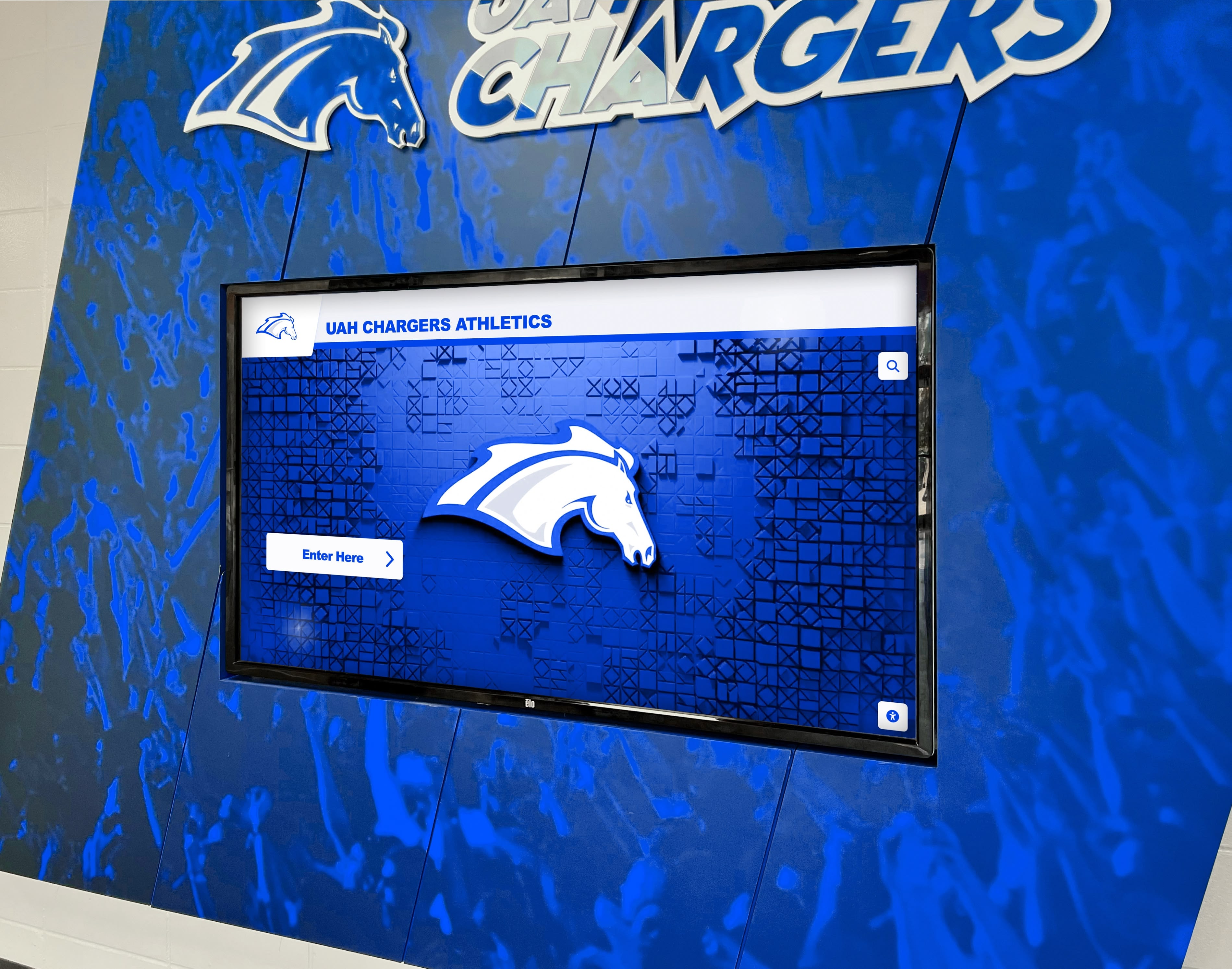
Herb Brooks’s Legacy
Coach Herb Brooks never escaped the shadow of his greatest achievement, with the Olympic victory defining his career and life.
Continued Coaching:
- Brooks coached at various levels following the Olympics, including NHL stints
- He led the 2002 U.S. Olympic team to a silver medal, bookending his Olympic coaching career
- Brooks struggled at times to replicate the magical Olympic environment
- Players consistently credited Brooks’s preparation as essential to 1980 success
Tragic Death:
- Brooks died in a car accident in 2003, just months after coaching the 2002 Olympic team
- His death prompted tributes from players, hockey community, and broader public
- The loss reinforced Brooks’s singular importance to the Miracle on Ice achievement
Enduring Recognition:
- Brooks received numerous honors posthumously, including Hockey Hall of Fame induction
- The 2004 film “Miracle” starring Kurt Russell portrayed Brooks and the Olympic story
- Every American hockey coach since has been measured against Brooks’s Olympic achievement
- His demanding methods and systematic approach influenced coaching philosophy across sports
Brooks understood better than anyone that the 1980 Olympic gold medal resulted from preparation, belief, and execution under pressure—lessons applicable far beyond hockey.
Lessons and Legacy: What the Miracle on Ice Teaches Us
The 1980 Olympic hockey gold medal provides timeless lessons about achievement, preparation, and human potential.
Preparation and System Over Pure Talent
Herb Brooks demonstrated that systematic preparation and tactical execution can overcome raw talent disadvantages.
Preparation Principles:
- Brooks’s conditioning program ensured Americans could maintain pace with more skilled opponents
- System execution didn’t require players to be the best—just well-prepared and committed
- Attention to detail in scouting Soviet weaknesses provided tactical advantages
- Mental preparation through adversity training proved as important as physical conditioning
- Belief in system execution freed players from focusing on talent disparities
Modern Applications:
- Organizations implement systematic recognition programs that institutionalize excellence rather than relying on individual brilliance
- Preparation systems create competitive advantages when talent levels are similar
- Attention to detail in execution matters more than natural advantages
Team Chemistry and Collective Purpose
Individual talent becomes powerful only when channeled toward collective purpose through genuine team chemistry.
Unity Through Adversity:
- Brooks deliberately created common enemies—himself, the Soviets, the doubters—that unified his players
- Shared suffering during brutal training camps bonded players
- Sacrificing individual recognition for team success became the ultimate value
- Players from rival colleges united behind collective Olympic goals
- Trust developed through system execution where each player fulfilled specific roles
Recognition Applications:
- Modern programs celebrate team achievements alongside individual accomplishments
- Recognition systems like championship team displays honor collective success
- Comprehensive programs acknowledge every contributor’s role in team achievements

Belief and Mental Toughness
The Miracle on Ice demonstrated that belief in possibility, even when logic suggests impossibility, can fuel extraordinary achievement.
Psychological Factors:
- Brooks convinced players they could compete despite overwhelming evidence suggesting otherwise
- Each small success—the Swedish tie, the Czechoslovakia victory—built confidence
- The team never accepted that defeat was inevitable despite talent disparities
- Mental preparation through pressure situations reduced Olympic game anxiety
- Players focused on process and execution rather than outcome and opponents
Resilience Development:
- Organizations build culture through recognition of resilience and determination
- Celebrating comebacks and perseverance alongside victories creates values-driven cultures
- Recognition programs document complete journeys including obstacles overcome
David vs. Goliath: The Enduring Appeal
The Miracle on Ice resonates because it represents the ultimate underdog story with legitimate stakes and competition.
Universal Themes:
- Every person relates to facing overwhelming challenges with uncertain outcomes
- The story validates faith in preparation, determination, and belief
- David defeating Goliath satisfies desire for justice and meritocratic outcomes
- Cold War context gave the victory significance beyond sports
- Youth and inexperience triumphing over experience and expertise inspires across domains
This universal appeal ensures the Miracle on Ice story will inspire future generations long after participants are gone.
Modern Recognition: Celebrating the Miracle on Ice Legacy
Organizations across hockey and sports more broadly celebrate the Miracle on Ice through various recognition approaches.
Physical Memorials and Museums
Traditional recognition honors the achievement through permanent installations and collections.
Lake Placid Olympic Complex:
- The arena where the games occurred remains operational with extensive Olympic memorabilia
- Guided tours highlight the rink where the Miracle occurred
- Video presentations recreate the tournament atmosphere and significance
- Annual commemorations bring fans to the site of history
USA Hockey Facilities:
- USA Hockey headquarters in Colorado Springs features Miracle on Ice exhibits
- Artifacts including uniforms, equipment, and media coverage are preserved
- The organization connects 1980 success to current development programs
Hockey Hall of Fame:
- Players and coach Brooks have been inducted with comprehensive exhibits
- Artifacts and video preserve the complete Olympic story
- International recognition validates the achievement’s global significance
Digital Recognition Solutions
Modern technology enables comprehensive storytelling impossible with traditional displays alone.
Interactive Experiences:
- Digital platforms provide unlimited capacity for documenting complete stories
- Video integration brings championship moments to life for new generations
- Searchable databases allow exploration based on individual interests
- Interactive hall of fame systems transform passive viewing into engaging discovery
Multimedia Storytelling:
- Modern recognition includes game footage, player interviews, and documentary content
- Audio clips preserve Al Michaels’s legendary call and other historic moments
- Photo galleries document team development from selection through gold medals
- Digital display solutions enable rich content presentation
Remote Access:
- Web-based platforms extend recognition beyond physical locations
- Alumni and fans worldwide can access complete Olympic stories
- Social sharing amplifies recognition reach and engagement
- Solutions like Rocket Alumni Solutions provide platforms specifically designed for comprehensive sports recognition
Educational Programs and Inspiration
The Miracle on Ice story serves educational purposes teaching lessons applicable beyond hockey.
Youth Sports Education:
- Coaches reference 1980 Olympic preparation when teaching work ethic and system execution
- The story demonstrates how preparation and teamwork overcome talent disadvantages
- Players learn that championship moments require sustained effort over months and years
- Mental toughness training references Brooks’s approaches and 1980 team resilience
Leadership Development:
- Brooks’s coaching demonstrates how leaders build high-performing teams
- Creating unity through shared purpose and adversity teaches organizational management
- The story illustrates balancing tough love with belief in team potential
- Recognition of complete leadership journey inspires current coaches and leaders
Cultural Significance:
- History classes reference the Cold War context adding significance to athletic victory
- The story demonstrates sports’ capacity to unify and inspire beyond competition
- Studying the achievement teaches about 1980 American culture and international relations
- The universal lessons apply across cultures and circumstances
Programs celebrating sports history use comprehensive recognition systems documenting championship stories with appropriate depth and context.
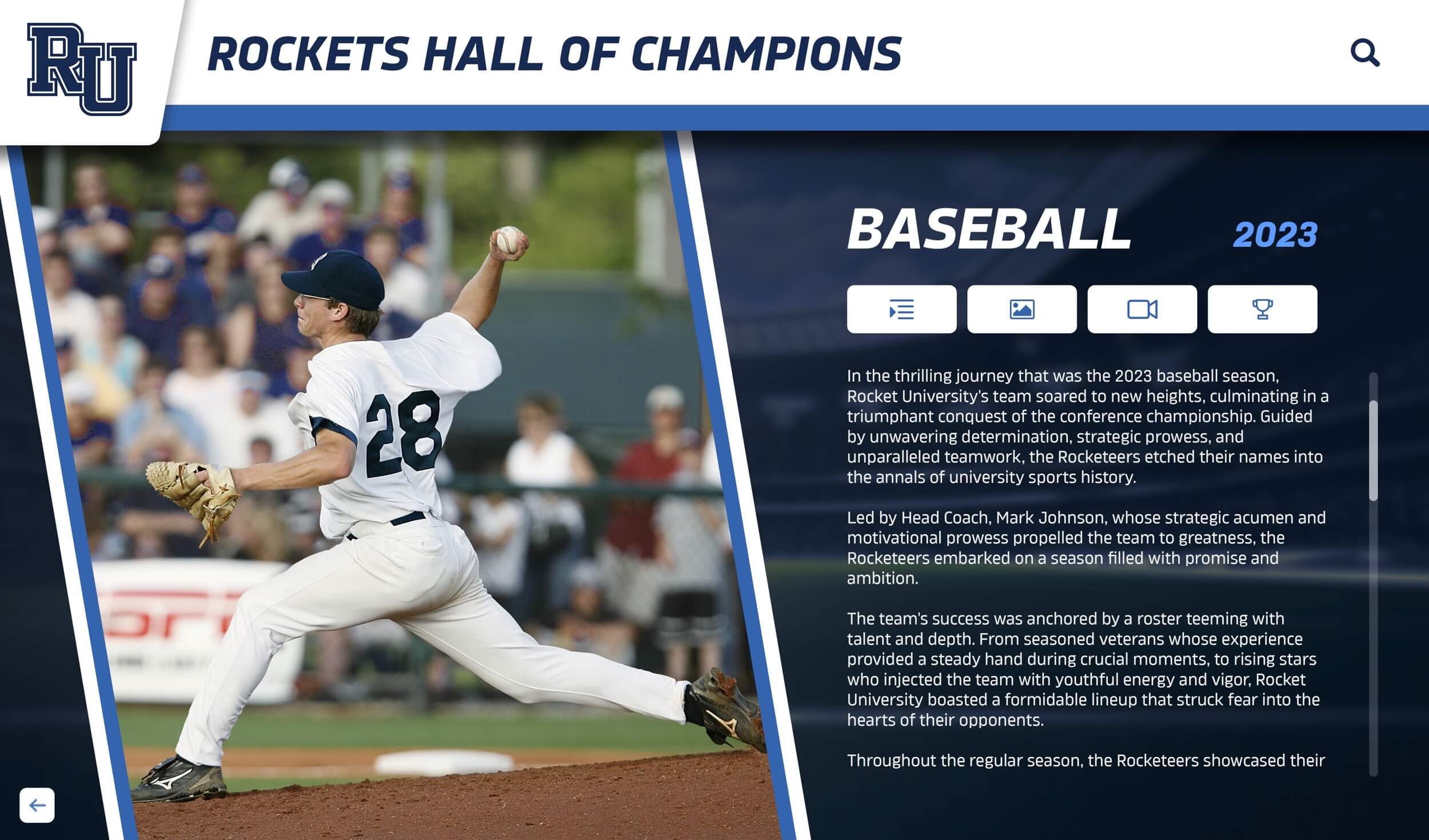
Conclusion: The Everlasting Miracle
More than four decades after twenty college students shocked the world by defeating the Soviet Union and capturing Olympic gold, the Miracle on Ice remains sports history’s most celebrated underdog story. The achievement transcended hockey and sports, occurring at a historical moment when Americans needed proof that determination, preparation, and belief could overcome seemingly impossible odds. Herb Brooks’s vision, brutal preparation methods, and tactical innovations transformed a collection of talented individuals into a unified team capable of achieving what logic and experience suggested was impossible.
The lessons from Lake Placid in February 1980 extend far beyond hockey rinks and Olympic arenas. Organizations across sports and beyond reference the Miracle on Ice when teaching preparation’s importance, team chemistry’s power, belief’s necessity when facing overwhelming challenges, resilience in the face of adversity, and the potential for extraordinary achievement when individuals commit to collective purpose. These timeless principles ensure the story will inspire long after all participants are gone.
For hockey programs at every level—from youth leagues through high schools to college teams—the Miracle on Ice provides both inspiration and a roadmap. The pathway from anonymous American colleges to Olympic glory demonstrates what comprehensive preparation, systematic development, and unwavering commitment can achieve. Modern recognition technology enables programs to celebrate their own championship achievements and inspiring moments with depth and engagement matching their significance, creating permanent records that inspire current and future generations while honoring past excellence.

Ready to celebrate your program’s championship achievements and inspiring moments? Rocket Alumni Solutions provides comprehensive digital recognition platforms specifically designed for sports programs, combining intuitive content management with engaging user experiences that bring championship stories to life. From youth programs building traditions through high schools celebrating athletic excellence to college teams honoring Olympic and professional athletes, modern recognition systems ensure achievements receive acknowledgment matching their significance.
The 1980 USA Olympic hockey team proved that preparation, system execution, team unity, and unwavering belief can overcome any disadvantage when channeled toward collective purpose. Their achievement deserves recognition and storytelling that inspires the next generation facing their own impossible challenges. Digital recognition solutions provide the capabilities these legendary stories deserve—unlimited capacity, rich multimedia, accessible presentation, and permanent preservation ensuring the Miracle on Ice and similar achievements inspire forever.
Do you believe in miracles? The 1980 American Olympic hockey team did, and they made the world believe too.



































